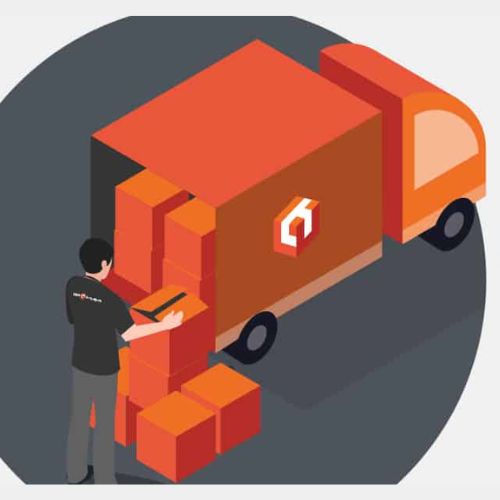CloudExtel was created in 2014, but its tale began much earlier, during the Gilded Age in British-ruled Bombay and even before electricity was invented. Bombay Gas used to send gas through pipes to Bombay buildings and even power street lights. The corporation discontinued gas service in the mid-1980s, and the pipes have remained idle since then.
That was until 2014, when Kunal Bajaj, a telecom industry veteran and former partner-India director of consulting firm Analysys Mason, was introduced to the Hamilton and Company group, the promoters of Bombay Gas. The company’s gas pipelines were to be converted into telecom assets by the firm, which had since diversified into real estate co. and other businesses.
When CloudExtel was founded, it took over the ancient gas pipelines in South Bombay, began excavation, cleaned them up, and placed over 200 kilometers of fiber. Because the fiber is buried beneath pathways and bridges inside cast-iron tubes, it adds an extra degree of security.
The company’s pipeline-turned-telecom assets gave way to its dark fiber leasing business, in which the service provider provides the fiber optic infrastructure but the customer operates it. Airtel, PGCIL, Railtel, Sify, Tata Communications, and Vodafone Idea are among its clients.
Bajaj, who had witnessed the market change from the bare minimum net speeds of the 2G period to the high speeds of 3G and 4G, had higher goals for the company than just geographic expansion. He planned to establish a network-as-a-service business, in which clients rent networking infrastructure and services via a cloud-like subscription-based approach.
“So, rather than just thinking about building out a fiber business, I came to them with the concept that we should actually look about building out a whole network-as-a-service (NaaS) full-stack operation,” Bajaj, who is also the co-founder of CloudExtel, told Business Insider India.
Network unblocking
While India requires underground fiber, which is difficult to install and maintain given the numerous hurdles that telecom companies confront, the sector itself has a slew of challenges in supplying high-speed data services to an increasingly demanding consumer base.
Because of India’s vast population and high density in most metropolitan and even semi-urban areas, telcos and ISPs have faced network issues. This is the issue that CloudExtel wishes to address.
“There is the traditional method of serving these (congested) areas with macro sites and huge towers. However, at some point, such macro sites become entirely congested, reaching capacity limits, and telcos must be able to provide extra capacity in that high-density location. “You then have to go from the very top of a tall structure with a vast site to a miniaturized site at a lower height closer to where the actual traffic consumption is,” added Bajaj.
CloudExtel installed 4,000 small cell sites throughout 325 cities and towns, in addition to building over 4,000 kilometers of fiber across cities. Furthermore, it offers services such as virtual networks, transforming it from an infrastructure-as-a-service provider to a NaaS provider.
It combines fiber-to-the-home (FTTH) with single-platform end-to-end services to design, plan, and operate networks for telcos and internet service providers targeting homes and small businesses.
“So we take some of the hardest elements of that telecom network and we build it out on behalf of the telcos, ISPs and content providers. We concentrate on difficult-to-solve problems requiring high network capacity or where getting fiber into the ground, buildings, and residences is problematic. “We can build out our network infrastructures and provide them as a service to our customers,” added Bajaj.
CloudExtel believes that there will come a time when telecom firms would outsource most or all of their infrastructure needs, paving the door for network-as-a-service (NaaS) providers like themselves. Global firms such as Cisco and IBM are also involved in the NaaS space.
“We are providing our customers with a completely virtualized network. It is comparable to Amazon Web Services or Google Cloud, which have supplanted firms who built, owned, and maintained their own data centers. “I’m not claiming that the telecom network or the telecom sector is ready to be entirely virtualized or to share all of these stations and microsites, but this is the first step in that process,” Bajaj added.
A new epoch is upon us.
CloudExtel Bombay Gas Venture has been bootstrapped and funded internally off the balance sheets till now. Despite its enormous assets, it nevertheless refers to itself as a startup. “So I still consider us a startup since we haven’t reached even one-tenth of what we believe we can do,” says the founder.
Even as India prepares to introduce 5G networks, Bajaj believes that the meaning of network speeds is changing as new technologies enter the market. And infrastructure providers like CloudExtel will need to keep ahead of the innovation curve.
“We’re launching 5G today, but work on 5G began ten years ago. That’s the kind of timeframe on which this industry operates. 5G will rely heavily on the ability to deploy tiny cells and deliver dense network capacity and excellent network signals in densely populated or high-traffic locations. That is essentially possible with only small cells placed extremely close to end customers at traffic crossroads and high-density areas.
Even as technology advances, the number of high bandwidth applications such as connected TVs, AR and VR-based commerce, metaverse, and so on is rising faster than the time required to construct the infrastructure required to manage it.
“I think the main problem we confront is we don’t have fixed-line infrastructure conspicuously available in the country. As a result, with increased capacity and throughput requirements, telecoms will always struggle to stay up with what the industry demands. “That was the seed of the idea eight years ago,” Bajaj explains.















